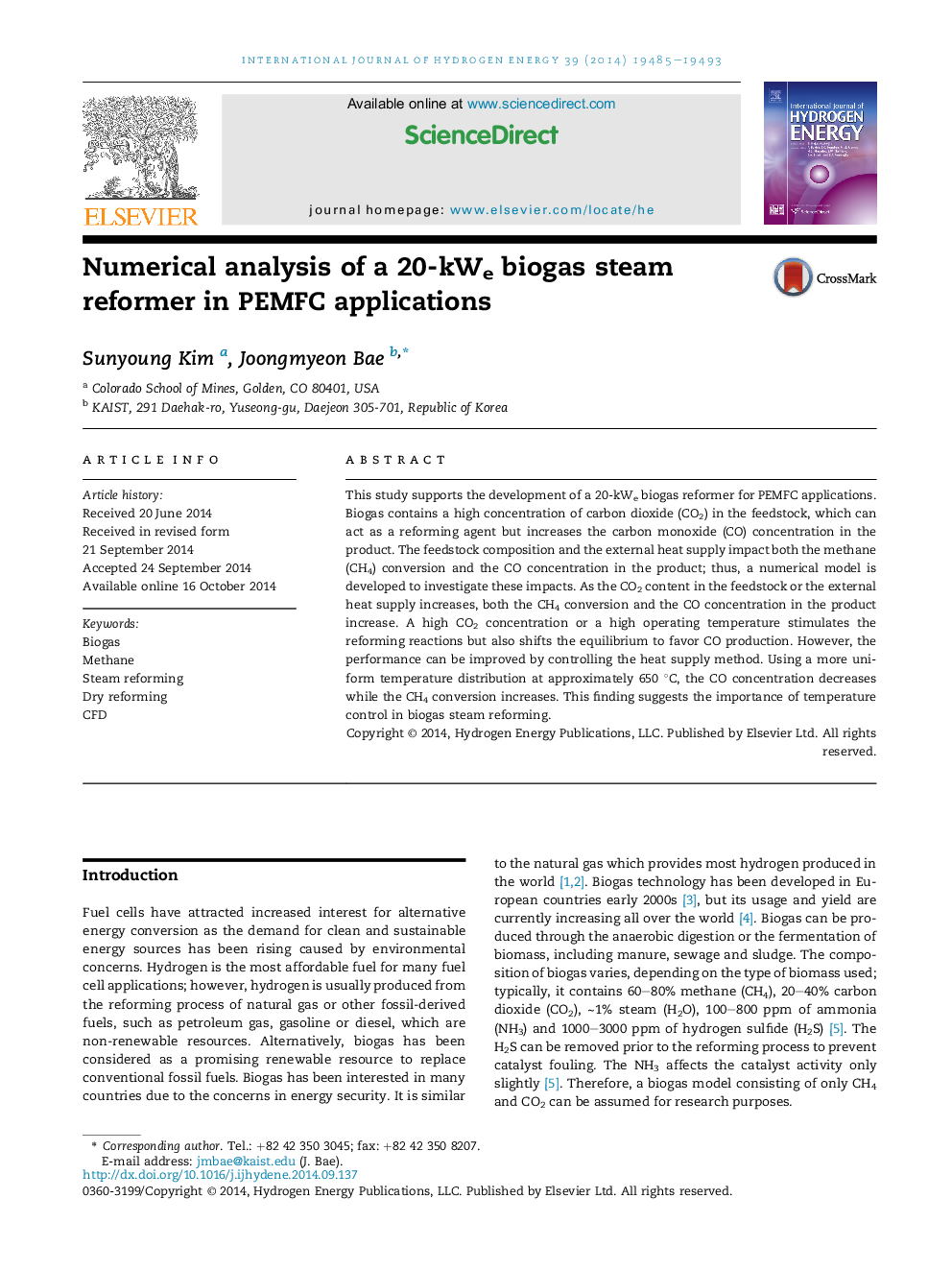| Article ID | Journal | Published Year | Pages | File Type |
|---|---|---|---|---|
| 1280700 | International Journal of Hydrogen Energy | 2014 | 9 Pages |
•A numerical model is developed to aid the development of a 20-kWe biogas reformer.•High CO2 content in biogas causes CO yield higher which can foul PEMFC catalyst.•One major challenge is to reduce CO but to maintain CH4 conversion at the same time.•Lower temperatures decrease CH4 conversion, higher temperatures increase CO yield.•The operating temperature should be maintained uniformly at around 650 °C.
This study supports the development of a 20-kWe biogas reformer for PEMFC applications. Biogas contains a high concentration of carbon dioxide (CO2) in the feedstock, which can act as a reforming agent but increases the carbon monoxide (CO) concentration in the product. The feedstock composition and the external heat supply impact both the methane (CH4) conversion and the CO concentration in the product; thus, a numerical model is developed to investigate these impacts. As the CO2 content in the feedstock or the external heat supply increases, both the CH4 conversion and the CO concentration in the product increase. A high CO2 concentration or a high operating temperature stimulates the reforming reactions but also shifts the equilibrium to favor CO production. However, the performance can be improved by controlling the heat supply method. Using a more uniform temperature distribution at approximately 650 °C, the CO concentration decreases while the CH4 conversion increases. This finding suggests the importance of temperature control in biogas steam reforming.
